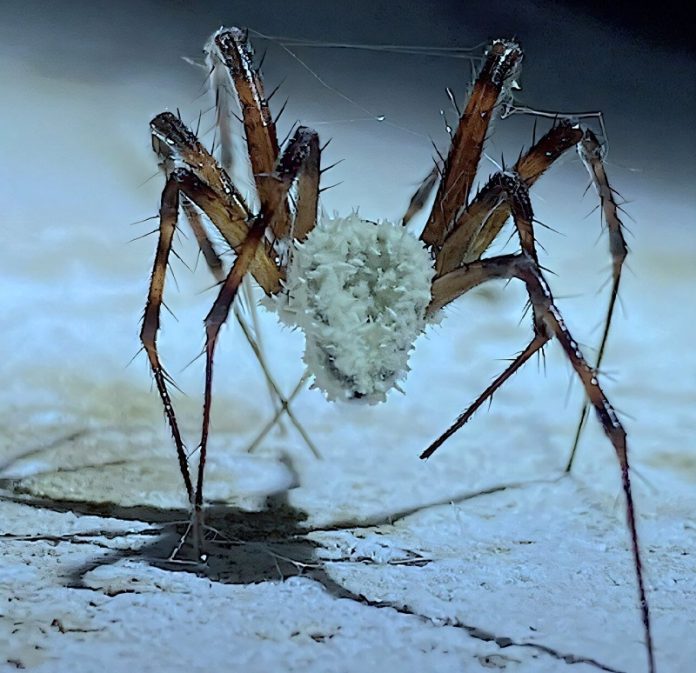
A newly discovered fungus that turns spiders into “zombies” has been found in caves across Northern Ireland and the Republic of Ireland.
The discovery was made during the filming of the BBC Winterwatch series and has now been officially studied by a team of scientists led by Dr. Harry Evans from CAB International.
Their findings were published in the journal Fungal Systematics and Evolution.
The researchers identified the fungus as a new species and named it Gibellula attenboroughii, in honor of Sir David Attenborough, the famous naturalist and broadcaster.
The first specimen was found growing on a cave spider (Metellina merianae) inside an old gunpowder store.
With the help of local cave experts, scientists later found more infected spiders in different caves across Ireland.
The fungus was also discovered on another type of cave spider, Meta menardi, which lives in different areas within the caves.
How the fungus turns spiders into “zombies”
Just like the famous Ophiocordyceps fungi that control ants in Brazil’s rainforests, this new fungus manipulates spider behavior.
Infected spiders leave their usual hiding spots and climb onto the ceilings or walls of caves, where they die in exposed positions.
This unusual behavior helps the fungus spread its spores more easily, increasing its chances of infecting more spiders.
Scientists believe the fungus may release chemicals that affect the spiders’ nervous systems, forcing them to move before they die. Similar behavior-altering compounds, such as dopamine, have been found in other “zombie fungi.”
A hidden world of spider-killing fungi
The research team also studied historical records of fungi in the British Isles and found evidence of widespread spider infections in places like Norfolk and Wales.
This suggests that these fungi may have been influencing spider populations for a long time, but until now, little was known about them.
Scientists believe these fungi play an important role in spider population control, and more research is needed to understand how they spread and what chemicals they produce.
This fascinating discovery highlights the hidden complexity of life in caves and raises new questions about how fungi manipulate their hosts. Could similar fungi be affecting other animals?
Future research may uncover even more eerie examples of nature’s ability to control behavior.



